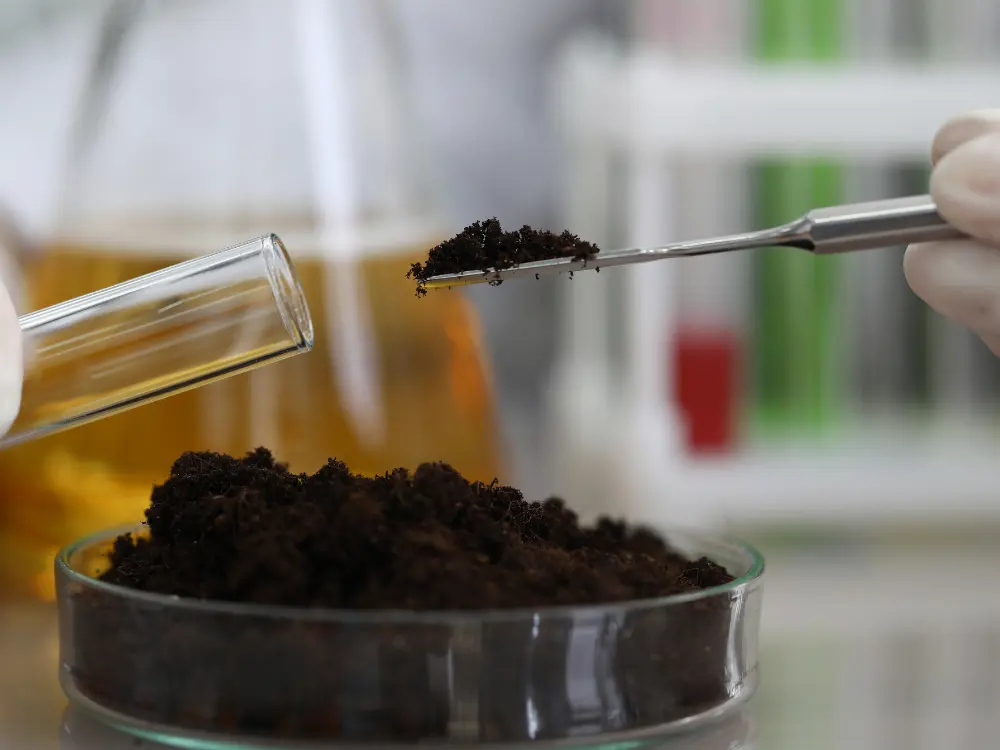Soil health is the foundation of successful farming. Healthy soil supports robust crop growth, maintains biodiversity, and ensures sustainable agriculture. In India, where agriculture is the primary source of livelihood for millions, maintaining soil health is crucial for food security and economic stability. However, over the years, practices like excessive use of chemical fertilizers, over-cultivation, and improper irrigation have led to soil degradation. The good news is that technology is now playing a pivotal role in reversing this trend and enhancing soil health. By leveraging advanced tools and techniques, farmers can monitor, manage, and improve the quality of their soil, leading to better yields and more sustainable farming practices.
The Importance of Soil Health
Soil health refers to the soil’s ability to function as a living ecosystem that sustains plants, animals, and humans. Healthy soil is rich in organic matter, nutrients, and microorganisms, all of which contribute to its fertility. When soil health deteriorates, it loses its ability to support crops, leading to reduced yields, increased susceptibility to pests and diseases, and the need for more chemical inputs, which further degrades the soil.
In India, the Green Revolution of the 1960s brought about significant increases in food production but also led to the overuse of chemical fertilizers and pesticides. This has resulted in widespread soil degradation, including nutrient depletion, loss of organic matter, and soil erosion. To address these challenges, farmers need to adopt practices that restore and maintain soil health, and technology is proving to be a valuable ally in this endeavor.
Technologies Enhancing Soil Health
1. Soil Testing and Analysis
Soil testing is the first step towards understanding the health of the soil. Traditionally, soil testing involved collecting samples and sending them to a laboratory for analysis, which could be time-consuming and costly. Today, advancements in technology have made soil testing more accessible and efficient.
Portable soil testing kits and digital soil sensors are now available, allowing farmers to test their soil’s nutrient levels, pH, moisture content, and organic matter right in their fields. These tools provide instant results, enabling farmers to make informed decisions about what their soil needs, whether it’s additional nutrients, organic matter, or corrective measures to adjust the pH.
Example in India: In states like Punjab and Haryana, soil testing has become more widespread with the introduction of mobile soil testing labs and handheld devices, helping farmers improve their soil management practices and boost crop yields.
2. Precision Agriculture
Precision agriculture is a farming approach that uses technology to monitor and manage soil and crop health with high accuracy. This approach relies on data from various sources, including GPS, satellite imagery, and sensors, to assess soil conditions and guide farming practices.
For instance, precision agriculture tools can create detailed maps of soil variability within a field, identifying areas that require more or less fertilizer or water. This allows farmers to apply inputs precisely where they are needed, reducing waste and preventing overuse of chemicals that can harm soil health. Precision agriculture not only enhances soil fertility but also increases crop productivity by ensuring that crops receive the right nutrients and water.
Example in India: In Maharashtra, precision agriculture is being used in sugarcane farming to manage soil health and water use more effectively, resulting in higher yields and lower input costs.
3. Organic Farming and Composting
Organic farming practices, which avoid synthetic chemicals, are gaining traction as a way to improve soil health. Technology is aiding this shift by providing tools and resources for composting and organic nutrient management.
Composting is a natural process that converts organic waste, such as crop residues and animal manure, into nutrient-rich compost that can be added to soil. Technological advancements in composting, such as aerated static piles and vermicomposting, make the process faster and more efficient. Composting not only adds organic matter to the soil, improving its structure and fertility, but also helps sequester carbon, contributing to climate change mitigation.
Example in India: In Tamil Nadu, farmers are increasingly adopting vermicomposting with the help of low-cost, user-friendly technology, improving soil health and reducing dependency on chemical fertilizers.
4. Remote Sensing and GIS
Remote sensing and Geographic Information Systems (GIS) are powerful tools that allow farmers to monitor soil health over large areas. These technologies use satellite imagery and aerial drones to collect data on soil moisture, temperature, and vegetation health.
With GIS, farmers can create detailed maps that show the spatial distribution of soil properties across their fields. This information helps them understand how soil health varies within their farm and allows them to tailor their soil management practices accordingly. Remote sensing also enables early detection of soil degradation, such as erosion or salinization, so that corrective actions can be taken before the problem worsens.
Example in India: The use of remote sensing in states like Rajasthan is helping farmers monitor and manage soil salinity, a significant issue in arid and semi-arid regions.
5. AI and Machine Learning
Artificial Intelligence (AI) and machine learning are becoming increasingly important in soil health management. These technologies can analyze vast amounts of data to predict soil health trends and recommend appropriate interventions.
For example, AI algorithms can process data from soil tests, weather forecasts, and crop performance to provide farmers with real-time recommendations on how to improve soil health. Machine learning models can also predict the long-term impact of different farming practices on soil quality, helping farmers adopt more sustainable practices.
Example in India: In Karnataka, AI-based platforms are being used to analyze soil data and provide farmers with personalized soil health reports and recommendations, leading to better soil management and higher crop yields.
Challenges and the Way Forward
While technology offers significant benefits for soil health management, its adoption is not without challenges. Many farmers, especially smallholders, may lack access to the necessary tools and knowledge to use these technologies effectively. Additionally, there is a need for greater awareness of the importance of soil health and the long-term benefits of sustainable farming practices.
To address these challenges, government initiatives, such as soil health card schemes, and partnerships with NGOs and private sector companies, are essential. These efforts can help make technology more accessible to farmers and provide them with the training and support needed to implement soil health-enhancing practices.
Conclusion
Maintaining and enhancing soil health is critical for the future of Indian agriculture. With the help of technology, farmers can monitor and manage their soil more effectively, ensuring that it remains fertile and productive for generations to come. From soil testing and precision agriculture to AI and remote sensing, the tools and techniques available today are transforming the way soil health is managed. By embracing these innovations, Indian farmers can improve their yields, reduce their environmental impact, and build a more sustainable and resilient agricultural system.

